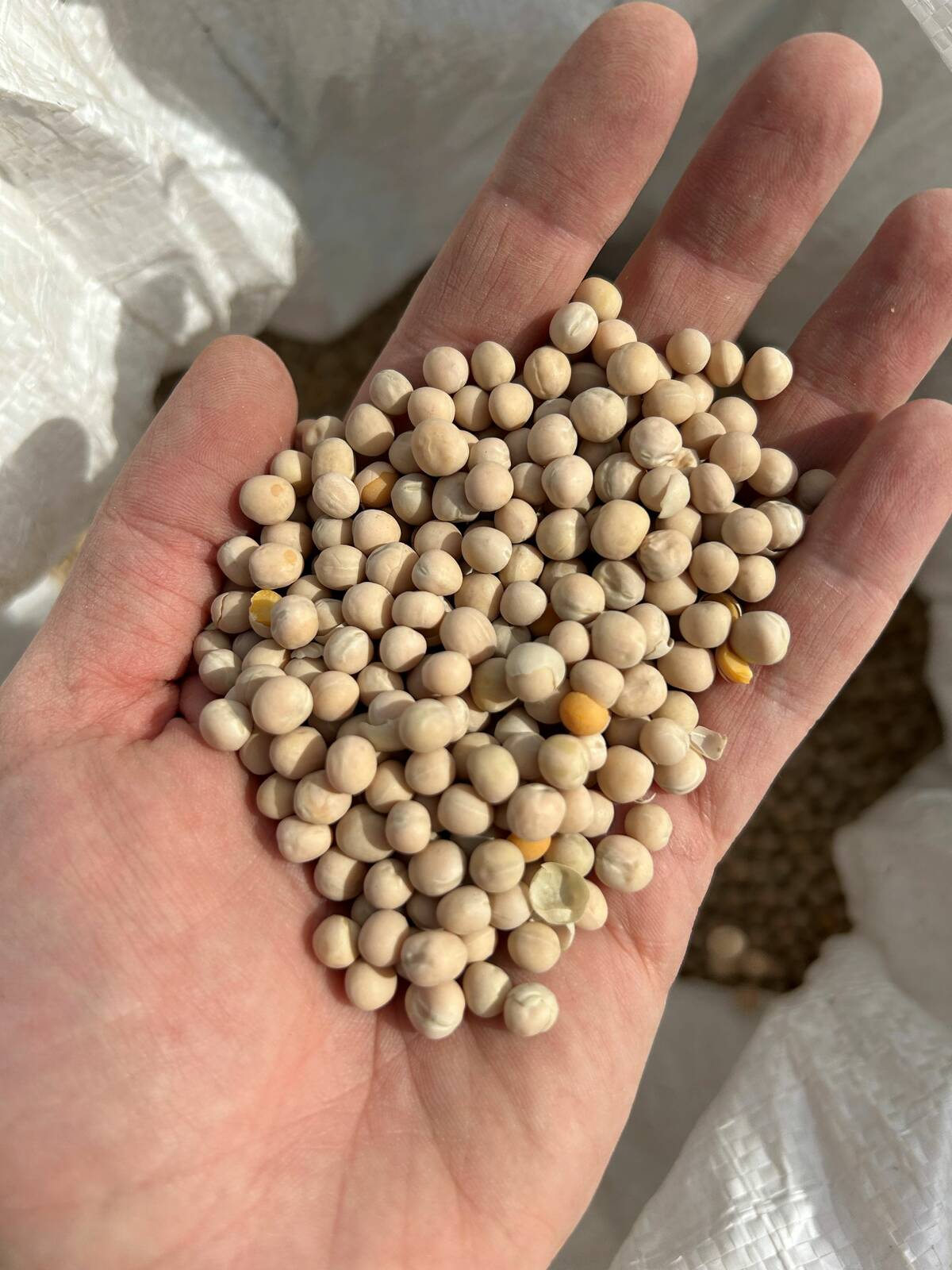Don’t look to your rising grocery bill to gauge how Canadian farmers’ wares are faring in the marketplace, a new study from a Manitoba farmers’ group suggests.
Shopping trips for the same basket of foods on May 10, 2008 and June 2, 2009 find the grocery bill for a Winnipeg family up 3.2 per cent from one year to the next, while the farmers’ share dropped 1.7 per cent, according to the 2009 “Farmers’ Share” study commissioned by Keystone Agricultural Producers.
“In the end, the consumer was paying $6.01 more for groceries, the farmer received 86 cents less, and the middleman received $6.87 more,” KAP said in a release Wednesday.
Read Also

Pulse Weekly: Tariffs guide yellow peas in 2025
Tariffs were a major influence on Canadian yellow pea prices in 2025, with levies imposed by China and India. The two countries are Canada’s biggest foreign pulse buyers.
The food choices in the study, conducted by Winnipeg consultant Alma Kennedy, were based on a week’s worth of meals following Canada’s Food Guide for two adults, a teenager and a child, with 89 per cent of the foods listed as being produced in Canada.
The total food bill, KAP reported, was $194.23 on the June 2009 shopping trip, compared to $188.22 in May 2008. Depending on the food group, the percentage going to the farmer ranged from five per cent for grain products to 53 per cent for milk and alternatives, for an average share of 27 per cent at the farm gate.
Given that farmers’ costs of production have risen, on average, to about 86 per cent of their total return, that means a grain grower is working for just 14 per cent of five per cent, meaning 0.7 per cent of a basket of grain products goes to the farmer’s net profit.
“Extremely small”
“That’s not sustainable (and) hasn’t been for some time,” KAP president Ian Wishart, a farmer from Portage la Prairie, Man., said during the group’s presentation Wednesday.
The study also noted the farmers’ share often varied with the number of steps in the chain between the farm and the grocery store.
“Less-processed foods such as vegetables often showed a greater return to the farmer,” KAP noted. “In the case of bread or other grain products, the actual return to the farm gate is extremely small.”
To get a larger share to the farmer, consumers would want to look for less-processed foods, said Kennedy, a former University of Manitoba professor. As well, she advised consumers to look for locally-produced foods, for which transportation makes up less of the retail price.
And grain prices are also down, according to Canadian Wheat Board data made available at KAP’s press conference Wednesday in Winnipeg.
The current pool return outlook (PRO) for No. 1 CWRS wheat at 12.5 per cent protein is $6.42 per bushel, down 20 per cent from the July 2008-09 PRO of about $8, down 36 per cent from the recent high of $9.99 (2007-08) and down from the historic high in 1973-74 of $4.58 — about $20 per bushel in constant dollars.
For malting barley, the 2009-10 PRO of $4.88 is down 29 per cent from the 2008-09 record high of $6.84 in nominal dollars, the CWB noted.
In either case, CWB spokesperson Maureen Fitzhenry said, “there’s no way that the supply-and-demand fundamentals would reflect (that size of a) year-over-year drop.”
“Surprise”
The study also noted a rise in the cost of meat at the grocery store. For example, 600 grams of sirloin tip beef cost $9.15 in the 2009 basket, up from $4.61 in 2008, while the farmer’s share remained flat at $2.05, thus dropping from 44 to 20 per cent.
“Given that Canadian cattle producers are liquidating their herds to survive and that the federal government just announced millions of dollars to restructure the pork sector, it’s a surprise to see an increase in (meat) prices yet a decrease in the farmers’ share,” said Humphrey Banack, president of Alberta’s Wild Rose Agricultural Producers, in KAP’s release.
KAP’s results come as Statistics Canada on Thursday released its farm product price index (FPPI), which showed the prices farmers received for their commodities dropped 11.8 per cent in June 2009 compared to June 2008.
The prices farmers got for crops in June were down 21.4 per cent off the peaks seen in June 2008, StatsCan said.
“Higher prices for potatoes and vegetables were unable to compensate for lower prices for grains, oilseeds, speciality crops and fruits,” the federal agency said Thursday.
Prices producers received for livestock and animal products in June fell 1.3 per cent compared with June 2008, following 12 months of increases. “Decreases were recorded for all commodities except poultry and dairy,” StatsCan reported.
The KAP study’s results point to other issues as well, such as the length of distance between two “at-risk” groups, namely farmers and consumers, said David Northcott, executive co-ordinator of food bank Winnipeg Harvest.
Northcott noted a jump of about five per cent in the number of people using the food bank over the past seven to eight months.
The more “informed eating” we do, he said, is better for all concerned.















